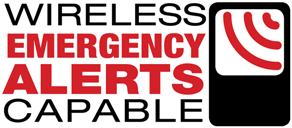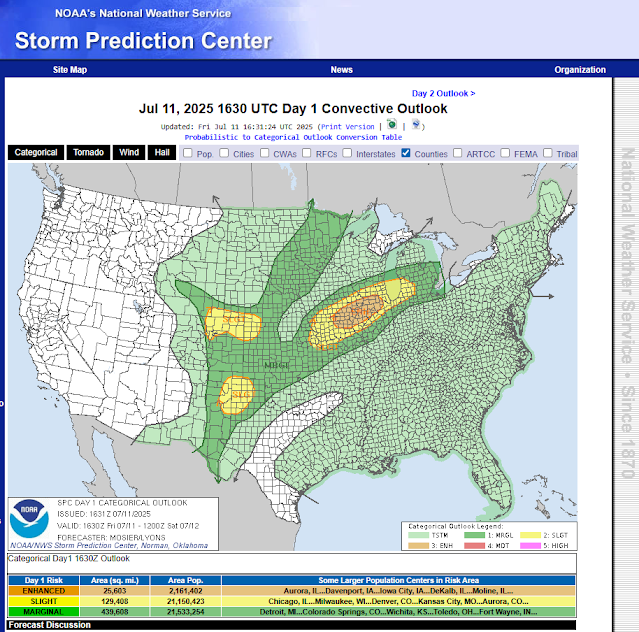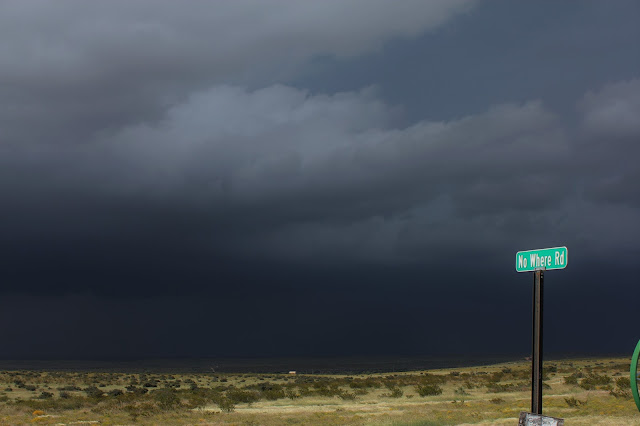Increasing Chances For T-Storms/Heavy Rainfall/Flash Flooding!

And check out real stories of how WEA has saved lives across America. |
Frequently Asked Questions
- What are WEA messages?
Wireless Emergency Alerts (WEA) are emergency messages sent by authorized government alerting authorities through your mobile carrier. Government partners include local and state public safety agencies, FEMA, the FCC, the Department of Homeland Security, and the National Weather Service. No signup is required! Alerts are sent automatically to WEA-capable phones during an emergency.
- Why is this important to me?
Alerts received at the right time can help keep you safe during an emergency. With WEA, alerts can be sent to your mobile device when you may be in harm's way, without need to download an app or subscribe to a service.
- What types of alerts will I receive?
- Extreme Weather and Hydrologic Warnings
- Local emergencies requiring evacuation or immediate action
- AMBER Alerts
- Blue Alerts
- Presidential Alerts during a national emergency
- What does a WEA message look like?
WEA will look like a text message. The WEA message will typically show the type and time of the alert, any action you should take, and the agency issuing the alert. The length and language of the message received on a particular device will be dependent on the wireless network and the language setting of the device. Messages will be up to 360 characters on 4G LTE networks and beyond. WEA message length will be a maximum of 90 characters on 3G and earlier networks. Please see the current NWS WEA messages in English and Spanish.

- How will I know the difference between WEA and a regular text message?
WEA messages include a special tone and vibration, both repeated twice.
- What types of WEA messages will the National Weather Service send?
Warnings for Tsunamis (see Fact Sheet), Tornado, Severe Thunderstorm (only when the damage threat is destructive), Flash Flood (only when the damage threat is considerable or catastrophic), Hurricane, Typhoon, Storm Surge, Extreme Wind, Dust Storm and Snow Squall.
- What should I do when I receive a WEA message?
Follow any action advised by the emergency message. Seek more details from your favorite TV or radio station, NOAA Weather Radio, news website, desktop application, mobile application, or other trusted source of information.
- Will I receive a WEA message if I'm visiting an area where I don't live, or outside the area where my phone is registered?
Yes, if you have a WEA-capable phone and your wireless carrier participates in the program. For information about which mobile devices are WEA-capable and carrier participation, please visit: http://www.ctia.org/consumer-resources/wireless-emergency-alerts or contact your wireless carrier.
- What if I travel into a threat area after a WEA message is already sent?
If you travel into a threat area after an alert is first sent, your WEA-capable device will receive the message when you enter the area.
- Does my cell phone have all WEA capabilities?
Many wireless devices available since 2012 support the ability to receive and present a Wireless Emergency Alert (WEA). As WEA has been enhanced with new features, wireless devices can support WEA 1.0, 2.0 or 3.0. Some of the features supported for each WEA version include:- WEA 1.0 supports alerts up to 90 characters in length and only in English.
- WEA 2.0 supports alerts up to 360 characters in length and Spanish alerts, so long as the alerting authority transmits in Spanish. Device settings may determine whether English or Spanish alerts are displayed.
- WEA 3.0 can support geographical targeting accuracy of 0.1 mile (1/10 mile). WEA 1.0 and 2.0 devices, and in some cases 3.0 devices, cannot support this enhanced geographic targeting. In cases where WEA 3.0 is not supported, the alert may be presented, but may not be within 0.1 mile accuracy.
- Is this the same service public safety agencies have asked the public to register for?
No, but they are complementary. Local agencies may have asked you to sign up to receive telephone calls, text messages, or emails. Those messages often include specific details about a critical event. WEA are very short messages designed to get your attention in an emergency situation. They may not give all the details you receive from other notification services.
- Will I be charged for receiving WEA messages?
No. This service is offered for free by wireless carriers. WEA messages will not count towards texting limits on your wireless plan.
- Does WEA know where I am? Is it tracking me?
No. WEA uses radio technology to broadcast the alert from cell towers to mobile devices in the area of the threat. Therefore, WEA doesn’t know exactly who is tuned in.
- Will a WEA message interrupt my phone conversations?
No, the alert will not interrupt your call.
- How often will I receive WEA messages?
You may receive frequent WEA messages during an emergency. Message frequency depends on the number of imminent threats to life or property in your area.
- If, during an emergency, I can't make or receive calls or text messages due to network congestion, will I still be able to receive a WEA message?
Yes, WEA messages are not affected by network congestion.
- What if I don't want to receive WEA messages?
You can opt-out of receiving WEA messages for imminent threats and AMBER alerts, but not for Presidential messages. To opt out, please refer to instructions from your wireless carrier or visit http://www.ctia.org/consumer-resources/wireless-emergency-alerts for more information.
Why did I receive an alert when there was no warning in effect for my location?
WEA messages are broadcast using radio-like technology from cell towers in, and sometimes around, the actual warning area. If your device is not capable of WEA 3.0 (see item #10 above), an alert can reach cell phones outside of the actual warning area depending on the broadcast range of the cell towers which broadcast the alert.How will I receive alerts if I don't have a WEA-capable device?
WEA is one of many ways you can receive emergency notifications. Other sources include NOAA Weather Radio, news media coverage, the Emergency Alert System on radio and TV broadcasts, desktop applications, mobile applications, and other alerting methods offered by local and state public safety agencies.How does the NWS activate a Wireless Emergency Alert on my cell phone?
The NWS pushes our suite of warnings, advisories, and watches to a national collection point called the Integrated Public Alert and Warning System (IPAWS). The NWS specially marks our most critical NWS alerts for WEA distribution, so that when they reach IPAWS, they are pushed to commercial wireless carriers who broadcast the alert from cell towers in the threat area to your cell phone. IPAWS also serves as collection point for non-weather alerts, such as civil and child abduction emergency messages which are issued by other emergency authorities. Once an alert is in IPAWS, the alert may be made available through a variety of channels for further distribution, such as broadcast over television/radio stations, sirens, display on highway signs, desktop and mobile alert software application, and the Wireless Emergency Alert system.
WEA Factsheet (PDF) - Download a factsheet on Wireless Emergency Alerts.





























As always your info is must appreciated. I learn much as well. We definitely need a lot more rain in extreme west Texas and southern New Mexico. The winds overnight and this morning along the east slopes of the Franklins have been very strong, breaking limbs off trees and throwing debris, ranking up there with strong winds of spring.
ReplyDeleteThanks. Looks like you guys got hit with the front as it backdoored east and southeast into the El Paso area. Hope you get t-storms and rain without the severe aspect.
ReplyDelete